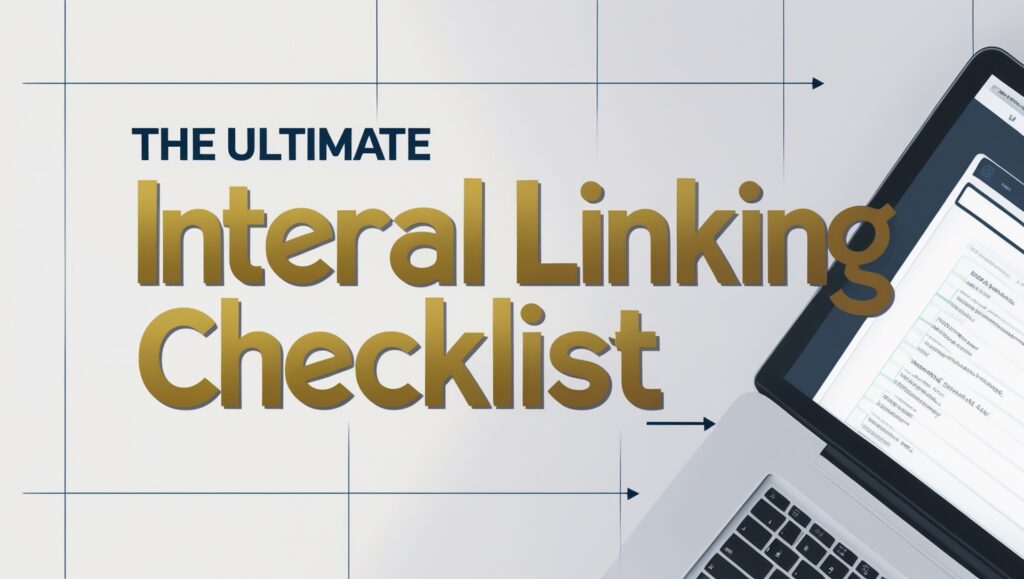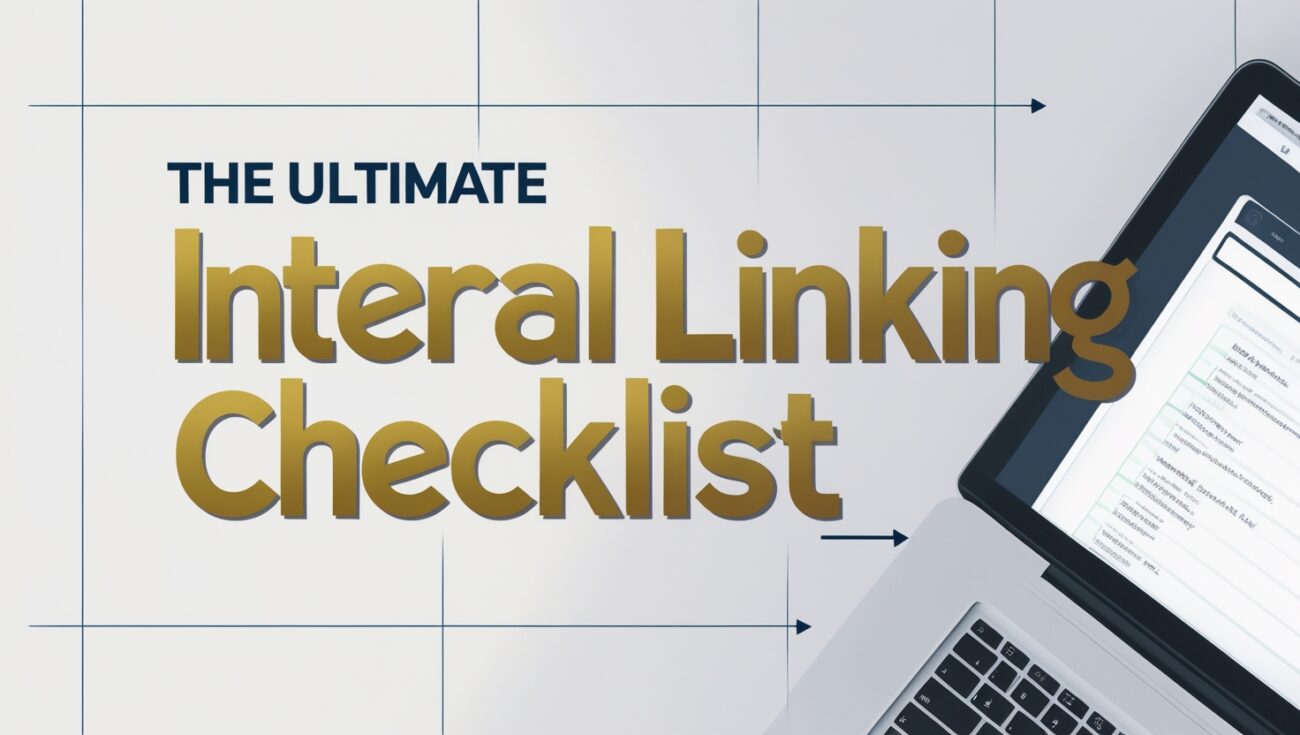Secrets to Building a Strong Website Structure with Internal Links
I used to see my website as a simple collection of blog posts. I would write, publish, and hope for the best. My website was like a pile of unorganized papers in a box—all the information was there, but it was impossible to find anything. It wasn’t until I started to see my website as a well-built house, with a solid foundation and a logical layout, that I began to see real ranking results.

Table of Contents
The secret to building a strong website structure, I’ve learned, is to use internal links as your building blocks. A website isn’t just what a user sees; it’s the underlying structure that helps search engines understand the relationships between your pages and rank your content accordingly. If you’re ready to learn the secrets of how top websites are built, this guide is for you.
The Foundation: Why Website Structure is a Secret Ranking Factor
A logical, organized website structure is one of the most powerful, yet often overlooked, ranking factors.
- For Google: A strong structure helps Google’s bots crawl and index your content more efficiently. It helps them understand the hierarchy of your pages and which pages are the most important. A website with a clear structure sends a strong signal to Google that you are a serious, organized, and authoritative resource.
- For Users: A good structure leads to a better user experience. When a visitor can easily find what they are looking for, they are more likely to stay on your site, which reduces your bounce rate and increases your time on page.
The Key Strategy: The Pillar & Cluster Model (Your Blueprint)
This is the most powerful blueprint for building a logical website structure. It’s the strategy that top websites use to dominate their niche.
- What it is: You create a central pillar page on a broad topic (e.g., “The Ultimate Guide to SEO”). Then, you write several supporting articles on more specific, related topics (e.g., “How to Find Keywords,” “Beginner’s Guide to Internal Linking”). The pillar page links out to all of the supporting articles, and all of the supporting articles link back to the pillar page.
- Why it Works: This model creates a clear “topical cluster” that signals to Google that you are a comprehensive expert on the subject. This boosts the rankings of all pages in the cluster and establishes your authority as a trusted resource.
The Supporting Secrets to a Strong Structure
- Secret #1: Link from Your Homepage: Your homepage is typically your most powerful page. It has the most authority. A secret to a strong structure is to use that authority strategically by linking from your homepage directly to your most important pillar pages.
- Secret #2: Fix Your Orphaned Pages: Orphaned pages—pages with no internal links pointing to them—are a sign of a broken website structure. They are invisible to search engines and a complete waste of your effort. A good structure ensures every single page is connected and has a clear path to it. A tool can find all of your orphaned pages in minutes so you can start fixing them immediately.
- Secret #3: The Internal Link Audit: A strong website structure requires regular maintenance. Over time, links can break or become outdated. You need a process to regularly audit your site for broken links and other errors. This helps to recover lost link equity and ensures your structure remains strong. I use a tool that automatically finds and alerts me to broken links.
The Tool That Builds Your Blueprint
I know what you’re thinking: planning and implementing this can feel overwhelming. That’s why internal linking automation is the key to making this practical. A good tool can analyze your content and build the blueprint for you, finding the opportunities to create a perfect structure without the manual effort. It’s the difference between a website that is a mess and one that is a well-built, high-ranking machine. Ready to build a powerful website structure that boosts your rankings? Discover how Linkbot can help you.
Conclusion: Build an Asset, Not Just a Collection of Pages
A strong website structure is not just for SEO; it’s a sign of a serious, organized business. By using internal links as your building blocks, you can stop seeing your website as a random collection of pages and start building a powerful, logical asset. This is the secret that will set you apart from your competition and give you the ranking results you’ve been looking for.
My journey taught me that a major mistake is seeing SEO as a mystery. By implementing a smart, structural approach to my website, I made the mental shift from being a spectator to an active participant in my website’s success. This simple realization took the overwhelm out of SEO and turned it into a series of logical, manageable steps that I could control.
The long-term, compounding effect of this strategic approach is what makes it so powerful. Each time you add a thoughtful, relevant link, you are not just performing a task; you are building your website’s authority, one link at a time. These small, consistent improvements add up to a significant competitive advantage over the long term, making your website an increasingly powerful asset.
I can say from personal experience that there is a special kind of satisfaction that comes from seeing a direct correlation between a new link and a ranking boost. It’s the feeling of taking a tangled mess and organizing it into a clean, logical network. The result is a website that just feels better to navigate, for both users and the people managing it.
A clean internal link profile also has a huge impact on your website’s overall trustworthiness and authority. When a user or a search engine bot lands on your page and sees a clear network of interconnected, relevant articles, it signals that you are a serious, comprehensive resource on the topic. This kind of professional organization is exactly what Google looks for.
The most important part of this foundational skill is building a consistent habit of linking. It’s not about a single audit and then forgetting about it. A good website is a living thing, and it needs regular maintenance to ensure your internal links stay clean, which is a key part of long-term SEO success.
I felt like I was finally in the driver’s seat of my SEO. For years, I had relied on external factors, which felt like I was giving up control of my SEO destiny. But by mastering a simple task like building my internal links, I was proactively building my site’s authority from the inside out, on my own terms, which was an empowering and exciting feeling.
By implementing a strategy that serves both SEO and conversions, you are also directly addressing Google’s E-E-A-T framework. You are demonstrating expertise by creating topical clusters, you are showing authority by linking from strong pages, and you are providing a better user experience, which is a key part of what Google looks for in a trustworthy website.
I’ll never forget the first time I applied my new internal link strategy to a page that was struggling to rank, and it shot up in the search results almost overnight. This was my “aha” moment. I realized that a strategic, well-placed link from a high-authority page was far more powerful than I ever thought possible.
One of the greatest benefits I got from using an automated tool to manage my link profile was the “to-do” list it provided. Instead of being overwhelmed by the sheer size of my website, the tool gave me a prioritized, actionable list of fixes to make. It transformed a monumental, frustrating task into a series of manageable steps that I could tackle in just minutes.
It’s crucial to understand the difference between a simple, generic link and a link that’s part of a strategic, mapped plan. A simple link is a one-off connection. A link that’s part of a plan is a purposeful part of a larger network, designed to pass authority and guide a user. The latter is far more powerful.
Ultimately, mastering internal linking is a simple but powerful strategy that transforms a website’s foundation. It’s a low-cost, high-impact fix that can instantly improve your site’s health and SEO performance. It’s the kind of foundational SEO work that every website owner should prioritize.
My final piece of advice is to not be intimidated. Don’t worry about the high cost of manual labor; just focus on making your website a better place for your readers. You will be amazed at the progress you make and the results you can achieve.

